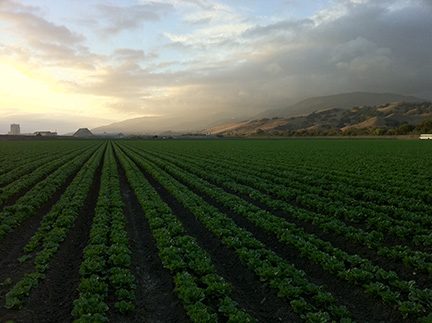News and Stories
Did the USDA’s Microbiological Data Program Make Food Safer?

President Obama’s budget for fiscal year 2013 was set to eliminate the USDA’s Microbiological Data Program (MDP). Now The Packer has reported that as of November 9, 2012, states would stop collecting samples for the testing program. Although consumers deem this as a blow to public safety, this is something that grower-shippers have long wanted to cease funding.
Why? What’s important to understand is that the USDA MDP was never intended to work as a food safety tool. It was originally funded as a research mechanism only—to find out what microorganisms exist on fresh produce and then train states to work in laboratory settings in preparation for any possible bioterrorism events.
The program conducted testing on retail shelves as well as the distributor and wholesale warehouse levels. If a sample produced a single positive result for E. coli O157:H7, Salmonella, or Listeria, at minimum, all products from that lot were required to be recalled. Even though Canada and Europe have a 100 CFU per gram of product tolerance for Listeria, the United States has a zero tolerance policy. It’s important to note that although countless recalls ensued, there were never any deaths or even sicknesses attributed to these products during the course of the ten-year MDP. That’s likely because most scientists believe that a certain amount of bacteria must be present before illness will occur.
As the Produce Marketing Association’s (PMA) Dr. Bob Whitaker explains, “the presence of a pathogen is not uniform throughout a plant, let alone in a field of product with potentially thousands of plants. The number of grab samples taken to be tested comprises a small percentage of the total product and cannot guarantee that amount of product is free of pathogens, only that that specific sample is; furthermore, an already proven negative sample can still have a positive result for that same pathogen in a subsequent test.”
The bottom line is that the MDP program did not ensure a safer product for consumers. In fact, this type of testing does little to protect the food supply; it only verifies that the specific sample is free of pathogens at that exact time.
What would be much better and what is really needed are comprehensive food safety plans for growers, their crews, and the facilities that are specific, measurable, and verifiable. Markon continues to work with the USDA, the PMA, the United Fresh Produce Association, and several other industry organizations in the fight for safer fresh fruits and vegetables. Stay tuned for how the battle is being fought and how Markon, our members, our growers, and our customers are pushing the boundaries of science and nature for the sake of health and safety.
